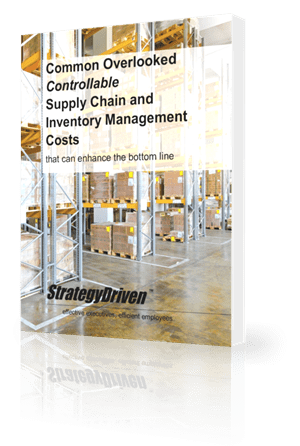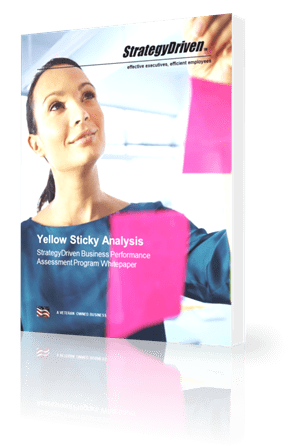How to Develop an Effective Employee Engagement Program: Strategies and Best Practices?
Employee engagement is a critical factor in the success of any organization. Engaged employees are more productive, innovative, and committed to their work. Developing an effective employee engagement program is essential to foster a positive work environment and maximize employee satisfaction. In this article, we will explore strategies and best practices to develop such a program that can boost employee engagement and contribute to overall organizational success.
Understand the Importance of Employee Engagement
Before diving into developing an engagement program, it is crucial to understand why it matters. Employee engagement impacts several key aspects of an organization, including productivity, retention, and customer satisfaction. Engaged employees are more likely to go above and beyond their job responsibilities, resulting in improved performance and increased productivity levels. They are also less likely to seek opportunities elsewhere, reducing turnover rates. Furthermore, engaged employees provide better customer service, leading to higher customer satisfaction levels and increased loyalty.
Define Clear Goals and Objectives
To develop an effective employee engagement program, start by defining clear goals and objectives. What do you aim to achieve through this program? Your goals should align with the overall business objectives of the organization. For example, your goals might include improving employee morale, increasing collaboration among teams, or enhancing employee well-being. Defining specific and measurable objectives will help you evaluate the success of your program and make necessary adjustments as you go.
Establish Strong Communication Channels
Communication is key to building trust and engagement within an organization. Establishing strong communication channels is crucial for an effective employee engagement program. Ensure that information flows freely and transparently across all levels of the organization. Encourage two-way communication by actively seeking feedback from employees and addressing their concerns. Utilize various communication tools such as regular team meetings, newsletters, and digital platforms to keep everyone informed and engaged.
Encourage Employee Development and Growth
Employees value opportunities for growth and development. Incorporate strategies that support their professional advancement and personal growth. Provide ongoing training programs, mentorship opportunities, and access to resources that enable employees to enhance their skills. Implement performance management systems that focus on regular feedback and career planning. Recognize and reward employees who demonstrate exceptional performance and provide opportunities for advancement within the organization.
Foster a Positive Work Culture
A positive work culture is vital for employee engagement. Create an environment where employees feel valued, respected, and supported. Encourage teamwork, collaboration, and open dialogue. Celebrate achievements and milestones, both individual and team-based. Encourage work-life balance by promoting flexible work arrangements and wellness initiatives. Invest in creating a physical workspace that is comfortable, inspiring, and conducive to productivity.
Empower Employees and Encourage Autonomy
Employees feel more engaged when they have a sense of autonomy and control over their work. Encourage empowerment by delegating responsibility and providing employees with decision-making authority whenever possible. Give them the opportunity to contribute ideas, take ownership of projects, and make a meaningful impact. This not only enhances engagement but also fosters a culture of innovation and continuous improvement.
Recognize and Reward Employee Contributions
Recognition and rewards play a crucial role in employee engagement. Regularly acknowledge and appreciate employee contributions, both publicly and privately. Implement a recognition program that highlights exceptional performance, team achievements, and employee milestones. Rewards can include monetary incentives, promotions, additional time off, or non-monetary perks such as professional development opportunities or flexible work arrangements. Tailor the recognition and rewards to align with employee preferences and motivations.
Foster Leadership Support and Accountability
Leadership plays a critical role in shaping the employee experience and driving engagement. Ensure that leaders at all levels of the organization understand the importance of employee engagement and actively support the program. Provide leadership training and development programs that emphasize the role of leaders in fostering a positive work environment. Hold leaders accountable for creating and maintaining an engaged workforce through performance evaluations and feedback mechanisms.
Promote Work-Life Balance
Employees today value a healthy work-life balance. Recognize the importance of personal well-being and encourage practices that promote it. Offer flexible work schedules, remote work options, and paid time off to allow employees to manage their personal commitments and maintain a healthy work-life integration. Encourage employees to take breaks and disconnect from work during non-working hours to prevent burnout and improve overall satisfaction.
Foster Employee Relationships and Collaboration
Strong relationships among employees contribute to a positive work environment and enhance engagement. Encourage teamwork and collaboration by creating opportunities for employees to interact and connect with one another. Foster a sense of community through team-building activities, social events, and cross-functional projects. Implement collaboration tools and platforms that facilitate communication and knowledge-sharing among employees, regardless of their physical location.
Provide Meaningful Work
Employees are more engaged when they find their work meaningful and purposeful. Ensure that employees understand how their individual roles contribute to the larger organizational goals. Connect their work to the organization’s mission and vision, and regularly communicate the impact of their contributions. Provide opportunities for employees to work on projects that align with their interests and passions, allowing them to feel a sense of fulfillment and purpose in their work.
Continuous Feedback and Performance Management
Implement a culture of continuous feedback and performance management to enhance employee engagement. Replace traditional annual performance reviews with regular check-ins and constructive feedback sessions. Encourage managers to have open and honest conversations with their team members about their performance, growth opportunities, and development needs. Provide tools and resources to support managers in providing effective feedback and coaching to their employees.
Encourage Employee Well-being
Employee well-being is closely linked to engagement and productivity. Develop initiatives and programs that prioritize employee wellness. Offer wellness activities such as yoga or meditation classes, health screenings, and access to mental health resources. Promote a healthy lifestyle by providing healthy snacks, promoting physical activity, and creating a supportive work environment that values work-life balance.
Conclusion
Developing an effective employee engagement program requires a comprehensive approach that addresses various aspects of the employee experience. By understanding the importance of employee engagement, setting clear goals, fostering communication, and implementing strategies like promoting work-life balance, empowering employees, and recognizing their contributions, organizations can create a positive work environment that drives engagement and enhances overall performance. Remember to regularly evaluate the program’s effectiveness, stay agile, and adapt to the changing needs of your workforce to ensure continued success.














Leave a Reply
Want to join the discussion?Feel free to contribute!